OnePlus 15 review: The big battery boss is simply brilliant
OnePlus' 2025 flagship is no underdog – it not only stands shoulder to shoulder with its key competition, it outperforms them in some areas


The OnePlus 15 is the best-finished Android phone of the year (in Sand Storm), complete with battery life that's so far ahead of the competition that it's no underdog – it should be considered shoulder to shoulder among its key competitors. Sure, the camera setup being the weaker link may have some bearing on its appeal – and the Oppo Find X9's enhanced camera offering is hard to ignore – but in the context of its lower asking price, OnePlus has otherwise delivered a superb performer that's a clear 5-star Android option.
-
+
My favourite finish of any Android phone in 2025 (Sand Storm only)
-
+
Serious power thanks to Qualcomm's top-tier chip
-
+
Massive battery life pushes into two-day use
-
-
The zoom camera isn't all that – Oppo's Find X9 Pro with Hasselblad walks all over it
-
-
Fewer OS/security updates promised than key competitors
-
-
Some software features lack joined-up thinking
Why you can trust T3
In some respects, the OnePlus 15 is no surprise at all: following the flagship's China launch and a series of drip-feed teasers ahead of its international arrival – although the USA will have to wait for an unknown period – everything was already all out in the open.
But, actually, the OnePlus 15 is a massive surprise: with a specification that delivers above and beyond many of the best Android phones – especially its giant battery life, which is a cut above. Moreover, it's actually the handset's finish in Sand Storm that really sets it apart.
Sure, the long-held Hasselblad partnership has been axed, and the OnePlus 15's zoom optic and new DetailMax Engine can't compete with Oppo's step-up Find X9 Pro, but otherwise this would-be underdog is very much ticking all the right boxes to be a mainstream appealer at a lower price point than many.
Price & Availability
The OnePlus 15 is available right now in the UK and across Europe, with an early promotional discount until 12 December 2025 – if you're quick. Check out the price table below for region/variant specifics:
OnePlus 15 | UK | Europe | USA | Australia |
12GB+256GB | £849 | €949 | $899.99 | AU$TBC |
16GB+512GB | £979 | €1099 | $999.99 | AU$TBC |
Promo (16+512) – until 12th Dec | £879 | €999 | $N/A | AU$TBC |
While it's priced from £849/€949, it's a no-brainer to grab the increased RAM and storage variant from that early promotion – as it's not that much more cash.
And while it's expected to cost $899 in the USA, its release date Stateside still isn't final – owed to 'market conditions' and pending FCC certification.
The only thing I will say, however, is that the Oppo Find X9 Pro – which has a bigger battery and better cameras in what's otherwise basically the same device in a different finish – already has a promotion, with EE's £929 offer (for a limited time) making that a no-brainer.
Get all the latest news, reviews, deals and buying guides on gorgeous tech, home and active products from the T3 experts
OnePlus 15 vs OnePlus 13: What's New?
- Drops Hasselblad partnership in triple 50MP camera setup
- Main sensor is Sony IMX906, claims 60% more light sensitivity
- Tele sensor is 3.5x periscope zoom, up from 3x before
- Smaller, lower-resolution display with faster refresh
- 6.78-inch (1272 x 2772, 165Hz) v 6.82in (1440 x 3168, 120Hz)
- Latest Snapdragon 8 Elite (Gen 5 vs 'Gen 4')
- 12GB RAM standard, 16GB available
- Larger battery capacity (new Si/C 3rd gen):
- 7300mAh v 6000mAh
- New, slimmer design:
- 8.1mm v 8.9mm
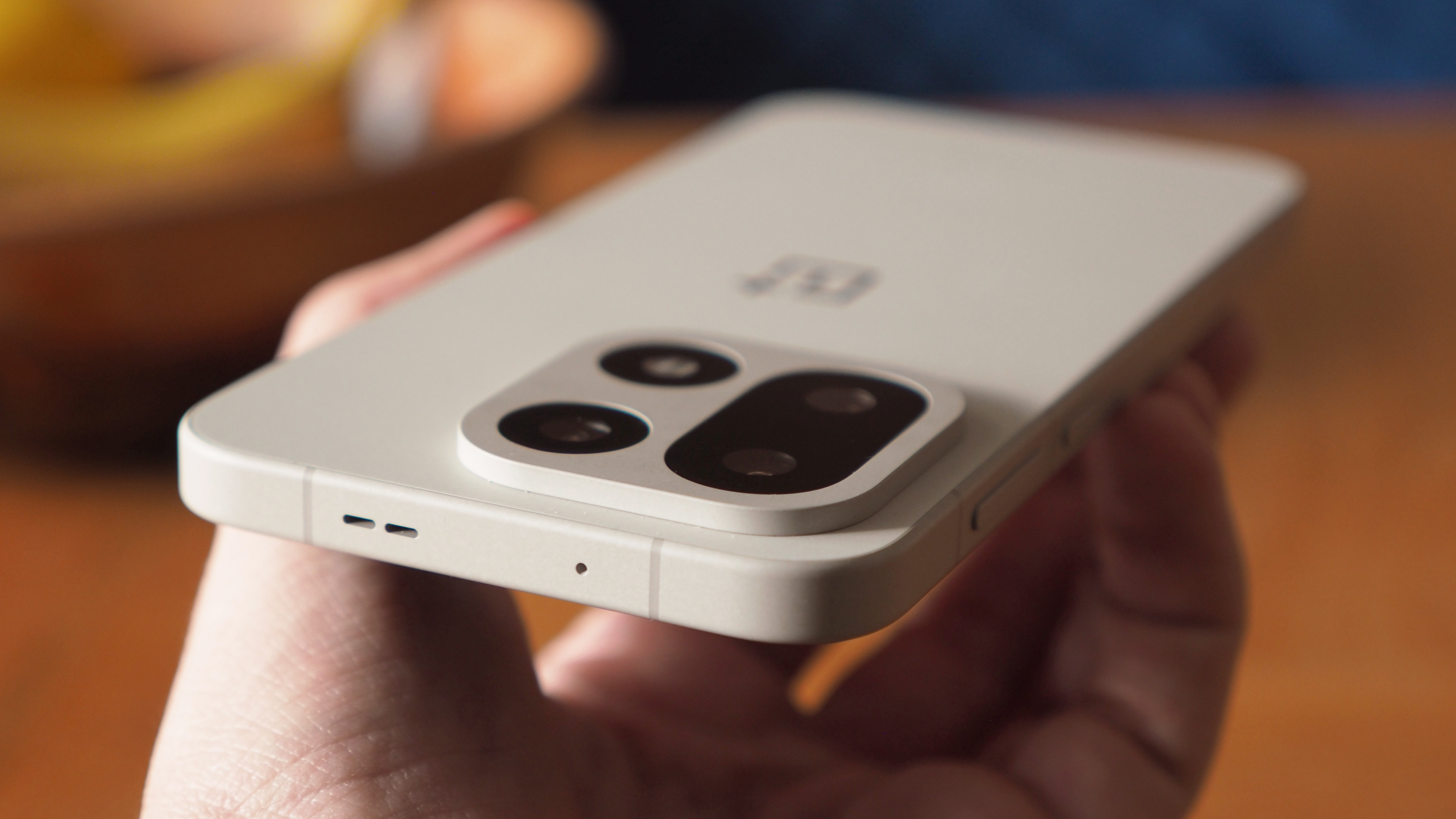
First up, though, a quick flashback: the OnePlus 13 – which we praised for undercutting on price but outperforming in raw power terms – was already a great phone. So what's changed in the newer OnePlus 15?
Quite a lot, actually. The newer handset is smaller and slimmer, however marginally, with a screen that's also shrunken by a mite and, as a result, has a lower resolution – but, honestly, I can't tell and wouldn't call it a downgrade by any measure.
Above all, however, I think it's the OnePlus 15's design evolution that's the most prominent difference. The camera island is no longer a circular form, but a rounded-off square that brings a new and more exciting visual to the fore.
It's the so-called Sand Storm finish that really stands out, though, as this fibreglass-backed design is cool to the touch, and feels ceramic-like thanks to being micro-arc oxidation (MAO) finished. This process also makes it extra tough – "3.4x tougher than aluminium and 1.3x tougher than titanium," OnePlus tells me.
There's more, too, with the much larger battery capacity an obvious upgrade. This dual-cell design means fast-charging remains feasible, too, which is one of the OnePlus 15's biggest sells, combined.
Design & Display
- 6.78-inch OLED display
- 1272 x 2772 resolution (450ppi density)
- LTPO up to 165Hz refresh rate
- Dolby Vision and HDR10+
- 19.5:9 aspect ratio
- Infinite Black, Sand Storm, Ultra Violet
- Measures: 8.1mm thin; Weight: 215g
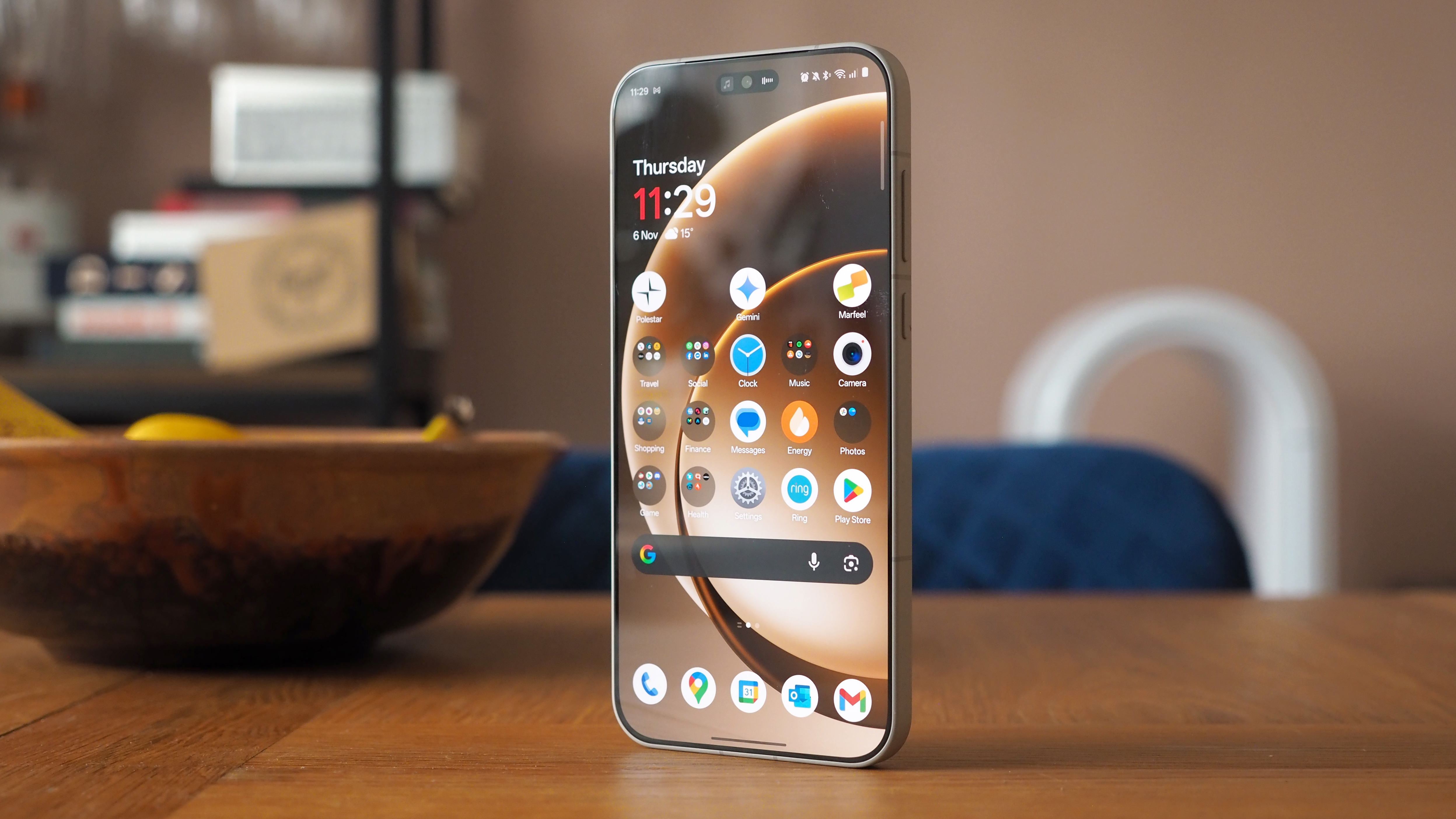
Having reviewed the 5-star Oppo Find X9 Pro for weeks ahead of this OnePlus 15 review – the two overlapped (much like their spec and software, frankly), which is why I wanted to give the latter a little extra time before publishing (and to avoid the swathe of pre-timed reviews set to OnePlus' specified embargo time).
Moving from one to the other didn't feel like a giant change, quite honestly, as they feature the same display and the core software – bar some pre-installs, naming conventions and graphical touches – is ultimately the same experience.
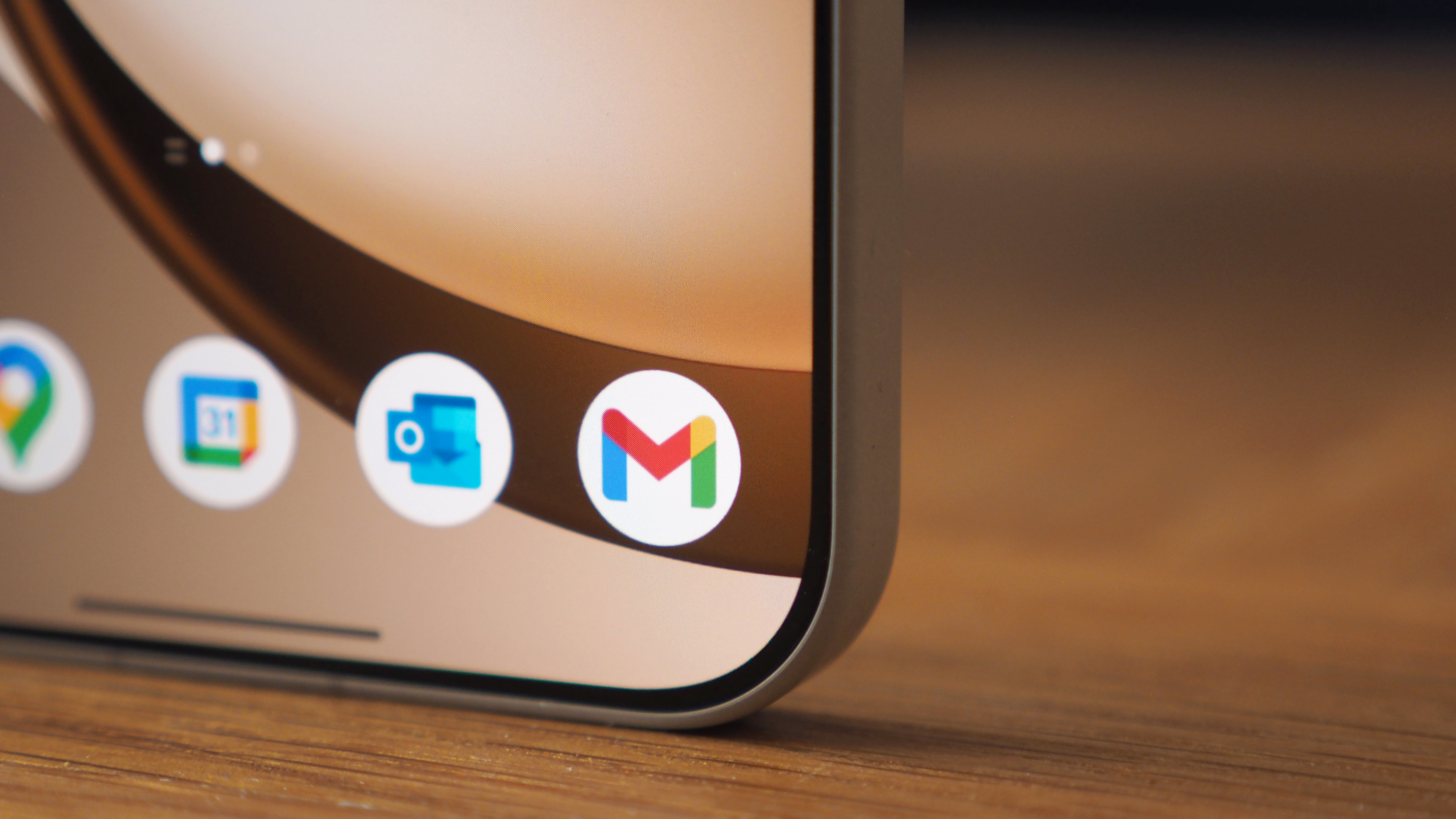
The display is tweaked differently, in terms of colour saturation defaults, and the brightness adjustment is less smooth on the OnePlus for whatever reason, but this 6.78-inch panel is still a stellar offering that's befitting of any 2025 flagship.
Its aspect ratio, scale and width make it, for me, an ideal size. And the bezels around the screen are positively tiny, which allows this flat OLED display to pop – as if it's the entirety of the phone's frontage.
I shall continue to wax lyrical about the handset's Sand Storm finish, too, as it's my favourite of any phone I've used this year. In CMF terms – that's colour, material and finish, acronym fans – it manages to be different without being outlandish (save for the Ultra Violet version, meh), has a soft-touch feel that's fingerprint-resistant, and after weeks of use, the unmarked frame has proven its toughness.
Performance & Battery
- Qualcomm SnapDragon 8 (Gen 5) processor
- 2x 4.6GHz, 6x3.6GHz; Adreno 840 GPU
- 12GB RAM; 256/512GB storage
- 7300mAh battery capacity
- 120W wired charging
- 50W wireless
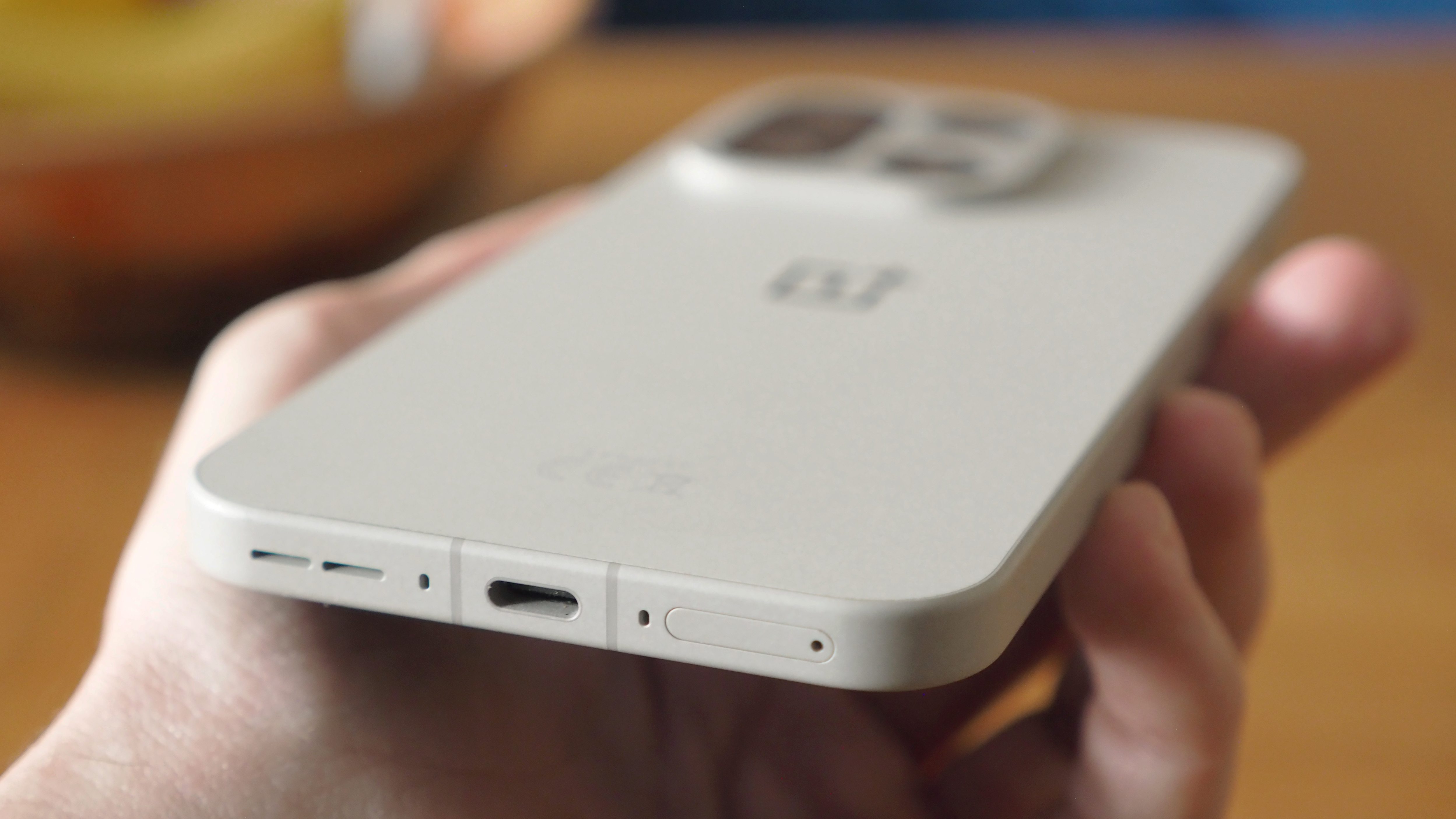
Here's where things get really interesting though. Having tested the Oppo Find X9, which features MediaTek's top-end Dimensity 9500 processor, I found that some of my staple go-to games, such as South Park: Phone Destroyer, wouldn't achieve visual frame-rate smoothness (regardless of what the game mode and display were telling me).
The OnePlus 15? Well, it's got Qualcomm's top-tier chip of 2025/6, the Snapdragon 8 Elite (Gen 5). And, based on my experience, it's just better. Everything has run super smoothly, including the above game, so there's seemingly just a better connect between this hardware and OnePlus' OxygenOS software.

I really couldn't be happier with the way the OnePlus 15 performs. It doesn't get hot thanks to some pretty ingenious additions in the design. Behind the processor's placement, OnePlus has included an area of white graphite (hexagonal boron nitride) that's well-regarded for heat dissipation. It's also expensive, hence not using it across a wider area.
Furthermore, the OnePlus 15 features a decent-sized vapour chamber (5731mm², to be precise) to extract that heat. It's constructed of a soft steel material and prevents that fibreglass rear from overheating. The only exception I've found is during charging, but I'm only talking 'warm' rather than 'cooking'.
Speaking of charging: you won't need to worry about it as often as you might expect. The massive 7300mAh cell on offer here is one of the largest available in any phone, so I've often not charged overnight and not had to worry as a result. Two days of use isn't out of question – I've managed over 40 hours in a standalone streaming test – although power users aren't going to quite reach the second evening.
It's interesting that the OnePlus 15's slightly lower battery capacity compared to the Oppo Find X9 Pro doesn't really have an impact. The two are pretty much like-for-like, again showing that Qualcomm's hardware under the hood has the slight edge in the side-by-side testing I've managed to do against the Oppo handset.
Software
- OxygenOS 16 (over Google Android 16)
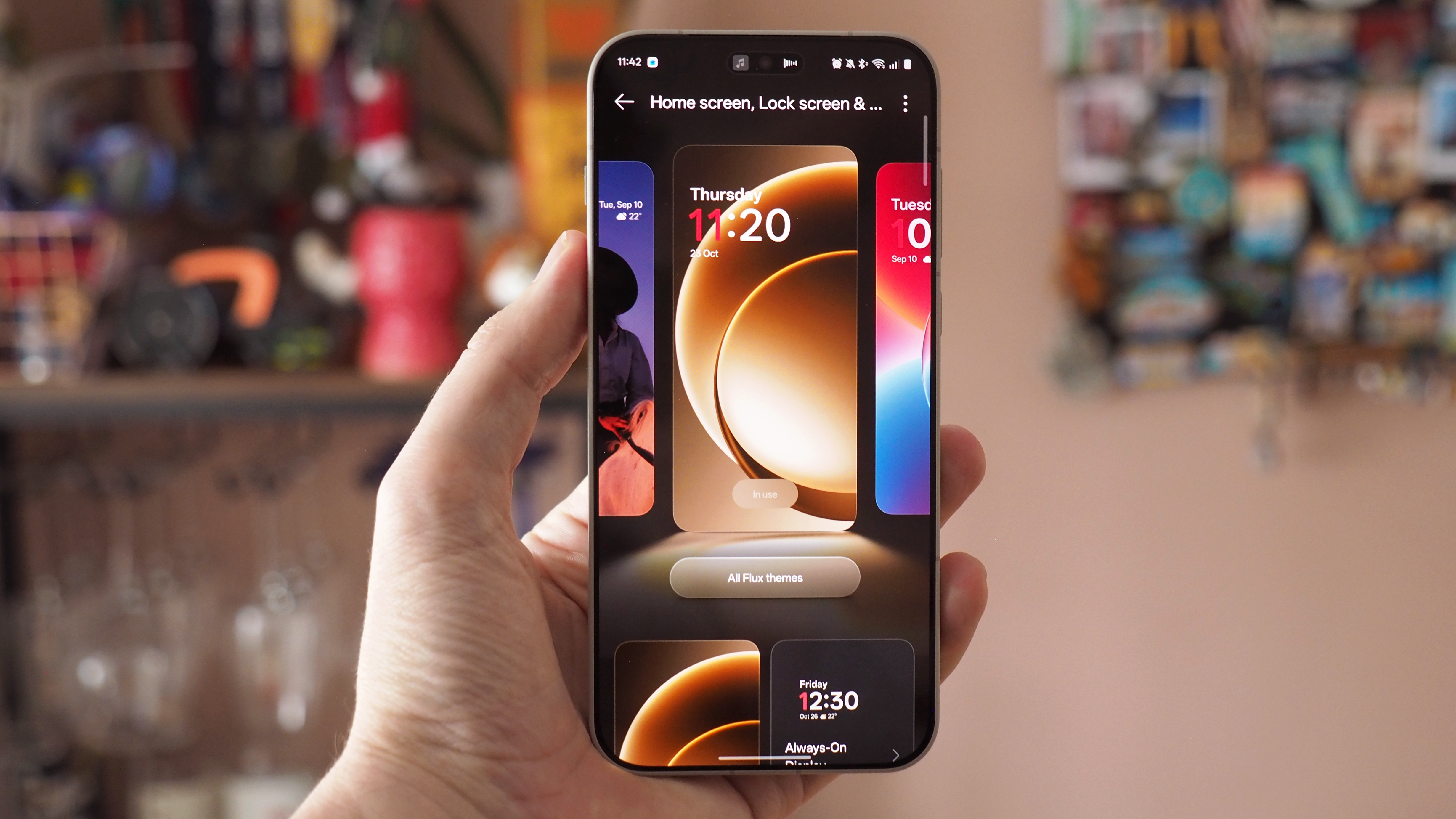
Software-wise, OnePlus' OxygenOS 16 is, by and large, the same as Oppo's ColorOS 16. As I said before, the only differences are with some graphical touches, naming conventions, and pre-installs. Otherwise the pair are an interesting reskin over Android 16 – with some positives and some negatives.
AI is a big part of the offering – how could it not be, given it's the buzz of 2025, right? – with the Plus Key (positioned upper left when facing the display) giving access to OnePlus' AI Mind Space feature. I've used it a bit, as it can be handy for adding some context – "what am I looking at?" to something you've screengrabbed, for example.
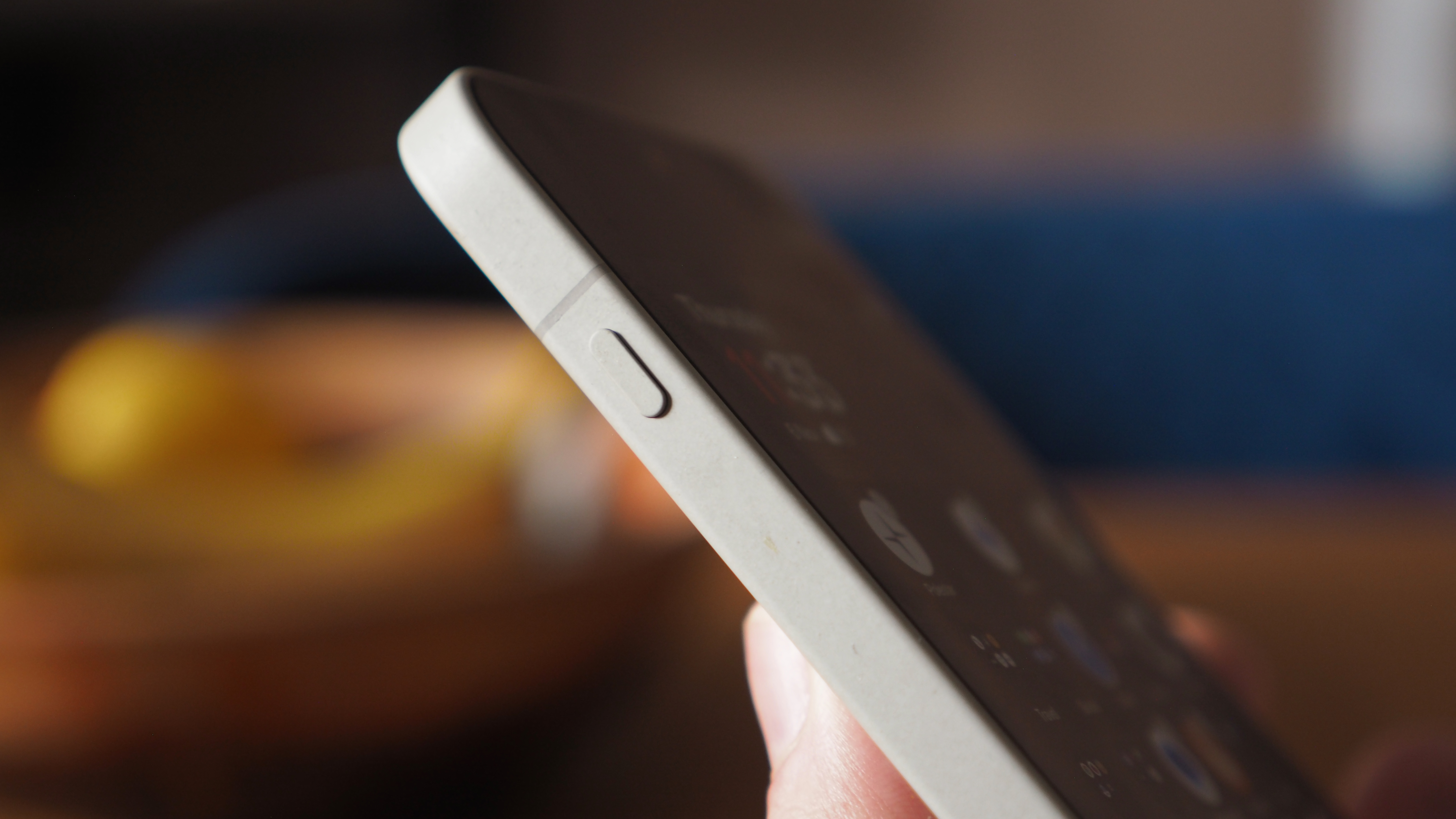
It's a solid place for collecting visuals and voice notes – much like Nothing's Essential Space – and I'm sure it will only continue to expand for the better. That said, as you can pre-set this key to dive into translation and other features – sound/DND, camera launch, torch, recorder, screenshot, or 'off' – you might prefer to have it setup that way.
I will say that OnePlus' software does runs very smoothly. I like that you can personalise the home screen, add various animations, adjust the scale and design of app icons, and so forth. All positives in adding to that unique, personalised feel.
However, just as I said with Oppo's equivalent software, some features need greater finesse. For such an 'AI forward' device, the lack of joined-up thinking in some areas is a surprise. After taking a photo and sharing on WhatsApp, for example, it won't default to my most recent contacts. That doesn't make sense to me – sometimes the app needs to be dug out of a list, too, despite persistent use.
On the flip side, there are some great features – they just need a bit more improvement and personalisation options. There's a floating pop-up miniature window for some apps, for example, which I could see being useful when multi-tasking – but really wish this could be controlled on a per-app basis. As it stands, it can't be – and 'mini WhatsApp' over various other applications has sometimes just jarred me.
Cameras
- Triple rear cameras:
- Main (24mm): 50-megapixel, f/1.8 aperture, 1/1.56in size (Sony IMX906), autofocus (PDAF), optical stabilisation (OIS)
- Tele (85mm; 3.5x periscope zoom): 50MP, f/2.8, 1/2.75in (Samsung S5KJN5), PDAF, OIS
- Wide (16mm): 50MP, f/2.0, 1/2.88in (OmniVision OV50D), PDAF
- Single front selfie camera:
- 21mm (at widest): 32MP, f/2.4, 1/2.74in (Sony IMX709), PDAF

In late October, ahead of this review, I was able to shoot at OnePlus' European launch event, in Prague, Czechia, and my initial impressions of the triple 50-megapixel camera were generally positive. I've included a gallery of snaps from that tour, below.






The thing about the OnePlus 15, however, is that it's always going to struggle to not sit in Oppo's shadow. After all, the latter brand is the only one to continue the Hasselblad partnership, has much more advanced sensors – in terms of resolution and size – and, having side-by-side tested the pair, there's a clear winner.
In the future I'll be publishing a proper versus comparison, as I've shot with both OnePlus 15 and Oppo Find X9 Pro in tow – and it's been very useful for it to highlight the differences in these camera setups. However, for this standalone review, I can't throw too much shade at OnePlus – it is the more affordable handset, after all.




The 15 comprises three lenses, delivering wide-angle, main and a 3.5x periscope optical zoom. The Camera app offers 0.6x, 1x, 2x, 3.5x and 7x by default – the 'double' multipliers being crops from the available lenses and, while good enough, do show some image degradation by comparison.
OnePlus has shouted loud and proud about its DetailMax Engine, which has slid into place in the absence of the Hasselblad collaboration, but it's not quite able to deliver across the board just yet. It's the zoom, in particular, that can't deliver biting sharpness – that 7x is fine but, again, not best in class.
Really, it's the main camera that does the best job. My selection of images below, captured in Mexico as part of my Oppo comparison, goes to show that detail is strong – even in close-ups – and this camera gives a decent basis in good or moderate lighting conditions.







It's not brilliant in low-light, though, defaulting to long exposure – which is particularly troubling at the longer focal lengths when using the zoom. That's one weakness that can't be overcome here, really.
In the broader context of the market, however, it's a fine camera setup for the money. Given that Samsung's Ultra flagship has only been nudging forward in the cameras department, OnePlus is hardly aeons behind.
It's just, as I say, in the shadow of the Oppo Find X9 Pro, it's the latter that's above them all – but you'll have to spend more to acquire that and forego the OnePlus' nicer finish.

Oppo Find X9 Pro review: Verdict
The OnePlus 15 is a great surprise: it's the best-looking (and best-feeling) Android phone I've handled in 2025; and with battery life that's so far ahead of most competitors, it's simply a stellar handset.
It's keenly priced in context to other flagships, and while that results in a camera setup that's the weaker link here – and could have some bearing on its appeal – it's still a fair setup for the money. Where available, the Oppo Find X9's enhanced camera offering is hard to ignore, mind.
OnePlus is often seen as the underdog. But in the OnePlus 15 it proves why it's shoulder to shoulder with the established players – offering superb performance, better battery life, and a finish that's like no other right now. It's simply great.
Also consider
The established brands do remain hard to ignore, though, as both Samsung's Galaxy S25 Ultra – with its S Pen stylus point of difference – and Google's Pixel 10 Pro XL – with its better Android 16 software setup – are obvious rivals.
Where available, however, the Oppo Find X9 Pro is akin to a 'OnePlus 15 Ultra', given its more considerable camera suite – even if I don't like the finish nearly as much and, for me, the MediaTek internals aren't quite as effective as OnePlus' Qualcomm choice.
Oh, and there's the price to consider too – the OnePlus 15 is cheaper than all of the above, which is another of its clear selling points. Like its predecessor: 'undercutting and outperforming' remains true to its core.

Mike is T3's Tech Editor. He's been writing about consumer technology for 15 years and his beat covers phones – of which he's seen hundreds of handsets over the years – laptops, gaming, TV & audio, and more. There's little consumer tech he's not had a hand at trying, and with extensive commissioning and editing experience, he knows the industry inside out. As the former Reviews Editor at Pocket-lint for 10 years where he furthered his knowledge and expertise, whilst writing about literally thousands of products, he's also provided work for publications such as Wired, The Guardian, Metro, and more.
You must confirm your public display name before commenting
Please logout and then login again, you will then be prompted to enter your display name.
